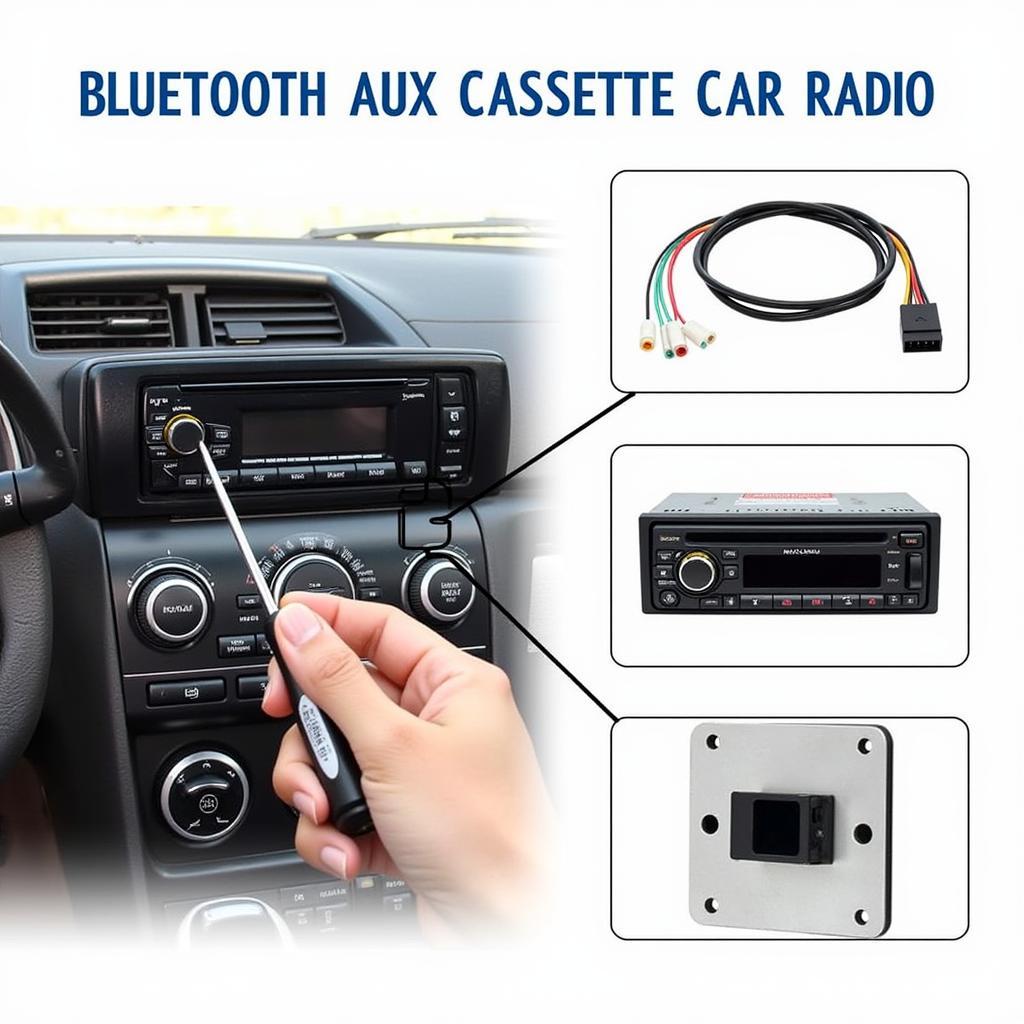A flashing brake warning light on your Lexus RX300 is never a good sign, but it doesn’t always mean a catastrophic failure requiring immediate roadside assistance. Understanding the potential causes can help you determine the severity of the problem and whether you can safely address it yourself or need professional help.
Common Causes of a Flashing Brake Light in a Lexus RX300
Several factors can trigger that anxiety-inducing flashing light on your dashboard. Here are some of the most common culprits:
1. Low Brake Fluid Level
This is perhaps the most frequent cause. Brake fluid is the lifeblood of your RX300’s braking system, transmitting force from the pedal to the wheels. A leak in the system or worn brake pads reducing fluid levels can trigger the warning light.
What to do:
- Check your brake fluid level. Locate the reservoir under the hood (refer to your owner’s manual) and check if the fluid level is below the “MIN” mark.
- Top up if necessary. If the level is low, carefully add the correct type of brake fluid (DOT 3 or DOT 4, as specified in your manual).
- Inspect for leaks. Look for any signs of fluid leaks around the master cylinder, brake lines, and calipers.
2. Faulty ABS Sensor
Your RX300 is equipped with an Anti-lock Braking System (ABS) that prevents wheel lockup during hard braking. A malfunctioning ABS sensor, often due to dirt or debris buildup, can disrupt this system and trigger the warning light.
What to do:
- Inspect ABS sensors. Visually check the sensors located near each wheel for any obvious damage or debris.
- Clean the sensors. Carefully clean the sensors and surrounding areas using a clean cloth and brake cleaner.
- Consider professional diagnosis. If cleaning doesn’t resolve the issue, it’s best to have the ABS system scanned for faults.
3. Worn Brake Pads
Brake pads are designed to wear down over time. When they reach a certain thickness, your RX300’s brake pad wear indicator will trigger the warning light, signaling it’s time for a replacement.
What to do:
- Inspect brake pad thickness. Check the thickness of your brake pads through the spaces between the wheel spokes. If you see less than 1/4 inch of pad material remaining, it’s time for new pads.
- Replace worn brake pads. It’s recommended to replace all four brake pads at the same time to ensure even braking performance.
4. Issues with the Brake Light Switch
The brake light switch, activated when you press the brake pedal, could be faulty. This can disrupt signals to the brake lights and also trigger the warning light on the dashboard.
What to do:
- Check brake light operation. Have someone press the brake pedal while you observe if all brake lights are illuminating correctly.
- Inspect the brake light switch. Located above the brake pedal, inspect the switch for any signs of damage or loose connections.
What to Do When Your Brake Warning Light is Flashing
- Don’t panic. While a flashing brake light is a cause for concern, it doesn’t always mean immediate danger.
- Pull over safely. If possible, move your RX300 off the road to a safe location.
- Assess the situation. Check your brake fluid level, inspect for leaks, and consider the other potential causes mentioned above.
- Seek professional help when necessary. If you can’t identify the cause or feel uncomfortable addressing the issue yourself, call a qualified mechanic or tow your vehicle to a trusted repair shop.
Expert Insight
“A flashing brake warning light should never be ignored,” says automotive expert John Smith, owner of Smith’s Auto Repair. “While it might be a simple issue like low brake fluid, it could also indicate a more serious problem that requires immediate attention. Always err on the side of caution and have your vehicle checked by a professional if you are unsure.”
Conclusion
A flashing brake warning light on your Lexus RX300 should never be taken lightly. Understanding the common causes and taking appropriate action can ensure your safety and prevent further damage to your vehicle. Remember, when in doubt, always seek professional help from a qualified mechanic.


